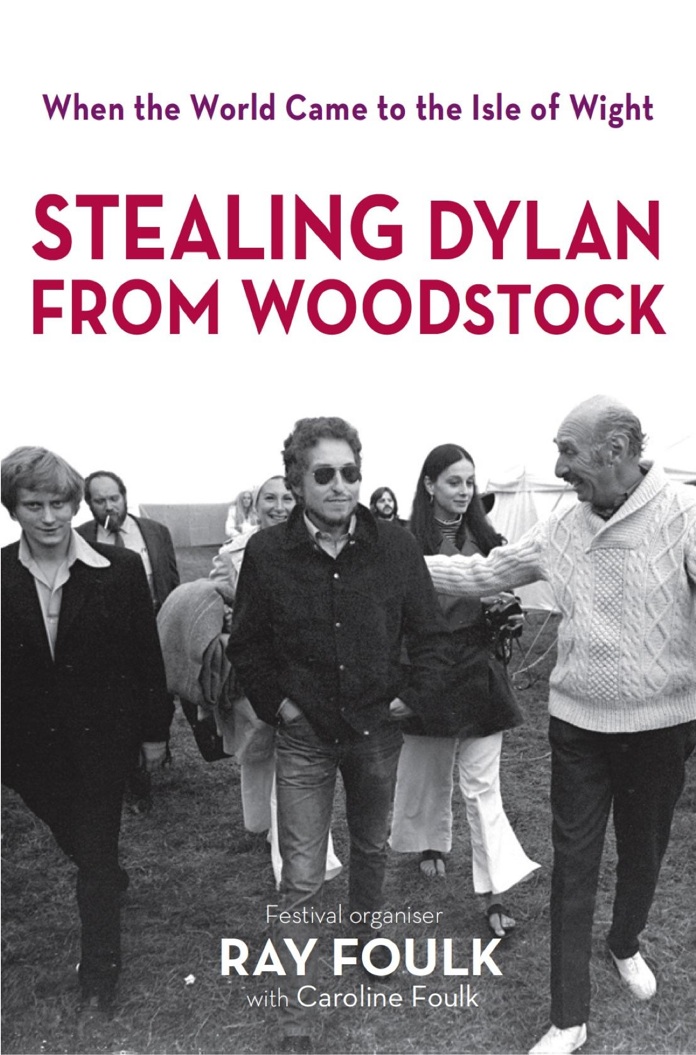
Ray Foulk with Caroline Foulk
Stealing Dylan from Woodstock: When the World Came to the Isle of Wight
Published by Medina
Jul 23, 2015
Web Exclusive
![]()
Ray Foulk, one of the organizers of the Isle of Wight Festivals of 1968 through1970, has, with his daughter, Caroline, presented, in Stealing Dylan from Woodstock, the definitive account of the ‘68 and ‘69 events. The book is a page-turning tale about how Foulk and his associates, all kids in their early 20s at the time, managed to swing some of the most successful British counter-culture events of the late-‘60s. Foulk and his comrades, including brothers Ronnie and Bill, were inexperienced at the time, and Stealing Dylan is in a sense a memoir of dreaming big and accomplishing the unthinkable.
Of course, the title is something of a misnomer. Bob Dylan was never interested in playing the Woodstock festival; in fact, he was so bothered by the perception of him as being a counter-culture messiah at the time, including incessant intrusions into the privacy of his Woodstock home, he wanted to, in fact leave the States at the time of the Woodstock event. So, Dylan’s appearance at Isle of Wight in 1969 was not so much of a steal. It was, however, something of a coup. Dylan had adopted a somewhat reclusive, family-driven life at the time. He hadn’t played an announced concert in three years, following a motorcycle accident of mysterious cause in 1966. Stealing Dylan details the specifics of how the Foulks built up the festival and brought Dylan to the Isle. For all the minutiae and specifics of Foulk’s account, the book is decidedly not boring. It does not bog down in technicalities. The writing shows insight into the times and the particulars of building the festival from the ground up to its ultimate goal of getting Dylan. The presentation is rife with pictures, news clips, flyers, etc. The book is an overall engaging experience.
The climax of Dylan’s actual performance is discussed within socio-political and musical context. Adequate background is provided for non-Dylan-philes, but even the most ardent of fans will take something from Foulk’s observations, which are peppered with footnotes detailing the research put into the sections of note. Some post-performance context is provided as well, discussion of where Dylan was heading musically after his Isle of Wight performance and what the landscape would consist of afterward.
All in all, Foulk’s tale is one of perseverance, one of reaching for dreams, and in this case, seeing them all come true. (www.medinapublishing.com)
Author rating: 8/10
Current Issue

Issue #72
Apr 19, 2024 Issue #72 - The ‘90s Issue with The Cardigans and Thurston Moore
Most Recent
- The Beginning and Then Some: The Albums of the ’80s (Review) —
- Premiere: Hunter Metts Shares New Single “Monochrome” (News) —
- Water’s Here in You (Review) —
- Charly Bliss Announce New Album, Share Video for New Song “Nineteen” (News) —
- Premiere: Corella Shares New Live Video for “Lady Messiah” (News) —

Comments
Submit your comment
There are no comments for this entry yet.